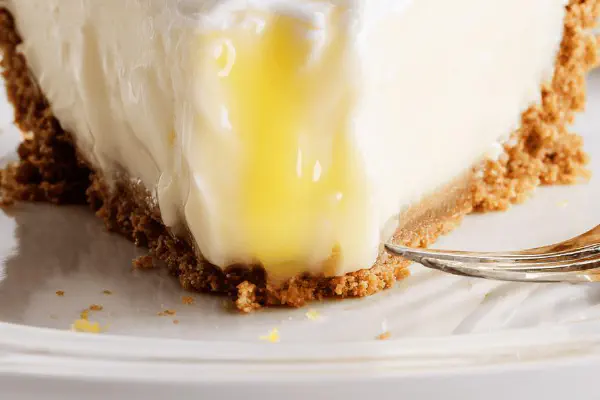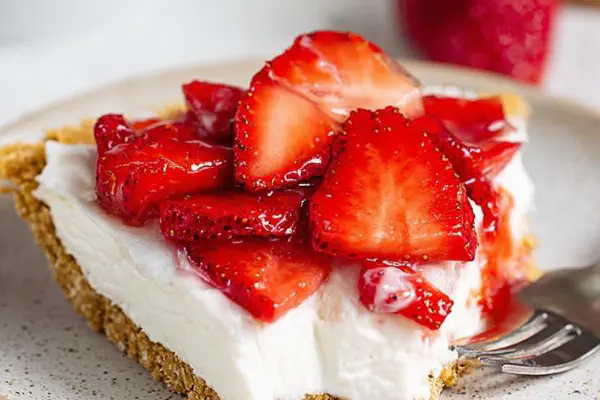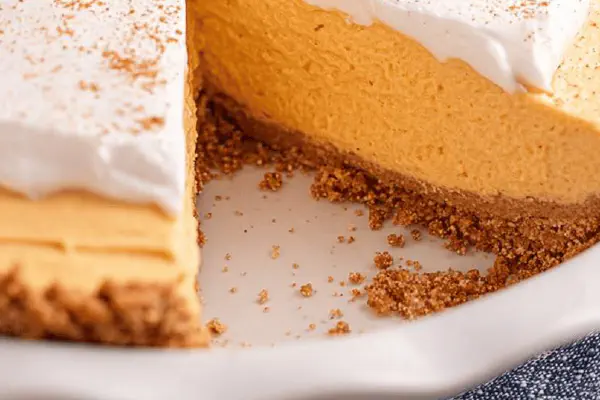Lemon Cream Cheese Pie

E
By Emma
Certified Culinary Professional
•
Recipe tested & approved
A no-bake lemon cream cheese pie blending tangy lemon juice with rich cream cheese and airy whipped cream. Uses powdered sugar balanced in two stages for sweet control. Graham cracker crust base contrast. Lemon curd topping adds zesty brightness. Chilling is key; filling firms and flavors meld. Whipped cream reserved for topping; soft then stiff peaks distinguish texture. Key sensory clues include lightness in cream cheese mix, billowy whipped cream, and smooth fold without deflating. Substitute lemon curd with homemade preserves or curds from scratch if store-bought unavailable. This pie holds well; overnight chill deepens flavor and simplifies serving. Watch the cream—over-whip and it turns grainy, under-whip and it won’t hold shape. Timing flexes slightly; visual and tactile cues better than clock.
Prep:
10 min
Cook:
0 min
Total:
Servings:
8 servings
#dessert
#no-bake
#lemon
#cream cheese
#whipped cream
#graham crust
#quick prep
Messy kitchen memories jumping to life—the giggle as cream cheese hits room temp and suddenly whipped to airy clouds. Lemon scent punches sharp, zingy, cuts the fat’s heaviness. Folding whipped cream? Learn patience quickly. Cream, that vulnerable fat fortress—overworked and it breaks, separate, bitter. Patience turns whipped cream from sidekick to star. Lemon curd glaze is the secret weapon splash. Not just tart but tactile, puckery, marrying soft and dense. Chill dry-run for flavor melds and slicing ease. A pie that lurks in fridge a few hours longer tastes deeper, more balanced. I swapped extra powdered sugar for a splash of honey once—added dimension. Could replace lemon curd with a berry compote for a sweet-tart twist, bias to the acidic side. Have emergency whipped topping? Fine but fresh cream does a million times better. Crunch from graham crust cuts through soft luscious filling. Tactile, sensory cues rule here; ditch strict timers, watch, feel, test, trust kitchen.
Ingredients
- 8 ounces cream cheese softened
- 3 tablespoons fresh lemon juice
- 1 cup powdered sugar divided
- 1 cup heavy cream plus 1/2 cup additional heavy cream chilled
- 1 9-inch graham cracker crust
- 1/3 cup lemon curd
- Zest of 1 lemon for garnish
About the ingredients
Cream cheese must be softened fully to avoid lumps in the filling or gritty spots. I prefer unsalted but salted works if you want a touch of savory. Fresh lemon juice always tops bottled; the brightness and acidity change flavor profile dramatically. Powdered sugar split helps control sweetness and texture—don’t dump all at once or cream gets grainy. Heavy cream cold straight from fridge whips better. If you lack heavy cream, full-fat coconut cream works no problem for dairy-free but adds coconut aroma, not subtle. Graham cracker crust eases prep; homemade offers crunch contrast but store-bought crust fine standby. Lemon curd—you can substitute with homemade or berry jam for less overt tart, or lime curd for a twist. Fresh lemon zest finishes with aromatic oils, no dried zest substitute—too bitter and dull. Refrigerate pie covered loosely to avoid moisture build-up on surface.
Method
- Start beating cream cheese with lemon juice and 5/8 cup powdered sugar until fluffy and pale. Not grainy or lumpy—feel creamy smooth but hold some structure. Critical to soften cream cheese well or risk lumps.
- In a cold bowl with chilled whisk, whisk 1 cup heavy cream until soft peaks form—lift whisk, peaks curl but droop at tips. Add remaining 3/8 cup powdered sugar. Continue beating until stiff peaks hold shape like firm mountains but still glossy, no grainy stiffness.
- Fold 7/8 cup of whipped cream gently into cream cheese mixture. Don’t beat—fold with a rubber spatula in wide strokes, keep volume. Rough spots? Fold more but no punching down.
- Spread mixture evenly in graham cracker crust rim; tap lightly on counter to settle, avoid cracks.
- With a spoon, gently layer lemon curd across the top. Do not spread aggressively—lemon curd too thick will tear base. Light dollops allowed to swirl together naturally.
- Chill at least 3 hours or up to 5 hours. Texture firms, edges pull away slightly from crust. Too little chill, filling wiggles. Too long, moisture builds—cover loosely to avoid condensation.
- Reserve remaining whipped cream chilled uncovered; when ready, piped or spoon dollops decorate pie surface. Garnish with fresh lemon zest over cream. Zest adds aromatic oils and brightens mouthfeel.
- Serve cold, slice with knife dipped in hot water then wiped dry for clean cuts.
Cooking tips
Beat cream cheese with lemon juice and majority of sugar until pale and fluffy; texture is key—too fast results in coarse lumps, patience rewards smooth. Whip cream starting cold: soft peaks form when peaks fold over at tips; stiff peaks hold firm. Add remaining sugar once soft peaks form to avoid grainy texture, then whip to stiff peaks. Folding cream requires gentle wide strokes, not aggressive mixing; helps keep airy volume in filling, yielding light texture rather than dense paste. Lemon curd added atop base carefully to avoid tearing filling—either dollop or gently spread with butter knife. Chill minimum 3 hours, ideally 4 to 5 to set and develop flavors; pie’s firmness signals readiness. Whipped cream kept chilled; pipe or dollop at serving, garnish with lemon zest which oils release aroma giving fresh, bright odor. Clean slicing trick: hot, dry knife; wipe between slices to avoid ragged edges.
Chef's notes
- 💡 Cream cheese must be softened fully. Cold or stiff lumps kill texture. Beat gently until fluffy but still holds some body. Avoid overheating or mixing too fast; you get grainy goop instead of tender clouds. Powdered sugar split matters here–dumping all at once creates grit. Add most at first then rest after cream whips, keeps balance.
- 💡 Whip heavy cream cold from fridge. Soft peaks come when tips curl then droop—watch closely; stop right there or wait slightly longer for stiff peak mountaintops. Overwhipping makes grainy butter, underwhip leads to sloppy folds that lose shape. Add last sugar once soft peaks form to avoid grit. Timing is visual, not clock.
- 💡 Folding whipped cream into cheese mix needs patience—wide rubber spatula strokes only. No punching, no fast stirring or volume vanishes. Keep light lifted air bubbles intact. Rough spots fix by gentle fold, no desperation. More folds hurt more than help if aggressive.
- 💡 Lemon curd on top—use spoon dollops, don’t spread or tear base. Thickness can drag filling. Let dollops swirl naturally, no forced spreading. Natural swirls keep texture underneath. If substitute with jam or homemade curd, adjust sweetness and set texture accordingly.
- 💡 Chill 3 to 5 hours minimum. Less time means filling wiggle; too long moisture can build. Cover loosely to avoid condensation pooling on surface. Overnight chill deepens flavor and firms firmness but beware fridging softness if temperature plays around.
Common questions
Why fold cream gently?
Folding saves air bubbles. Stirring destroys fluff. Volume drops fast if not careful. Use wide spatula, slow moves. Keep texture light, not dense paste.
Can lemon curd be swapped?
Yes, homemade jams or lime curd works. Taste shifts. Texture changes, may tear crust if too thin. Adjust sugar levels when swapping. Better fresher, not jarred.
What if cream breaks?
Happens when overwhipped. Fat separates, grainy texture. Stop at stiff peak stage. If broken, try whipping small fresh cream batch in for rescue. Otherwise start fresh.
How to store leftovers?
Covered in fridge loosely wrapped, avoids sogginess. Up to 3 days ok. Freeze not recommended; cream texture ruins. Bring to room temp briefly before serving, rebuild softness.



